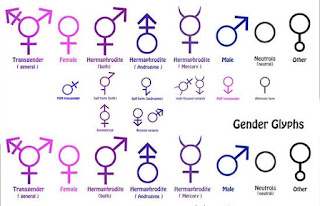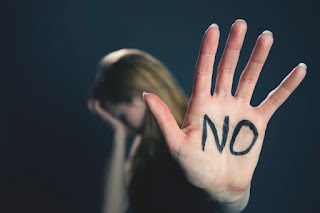Objectification of women in popular music
The influence of music can have far reaching effects for those who hear it or view the videos. Adolescents are one of the largest music markets, viewing on average 10 hours a week, and also one of the most impressionable demographics as their sexual identities are still developing. Music can have huge negative effects on body image and risky behaviour, things which are already massive issues for adolescents. Objectification of women in media normalises gender-based violence and harassment, and research shows that adolescents who accept gender stereotypes as normal are at a higher risk of suffering gendered violence and victimisation. Rodgers and Hust did a study last year that found a link between stereotyped, sexualised media, and acceptance of violence against women, which is in line with established evidence associating music media with interpersonal violence.
The purely pleasurable experience of music, its perceived realism, coupled with high levels of consumption lead to considerable influence on adolescents. Stereotypic, sexualised, objectified images of women are manipulated to make them appear powerful and attractive, thus influencing the consumer’s interpretation of what it means to be a woman. They promote this “empowerment” by the myth that the artists are choosing to embrace their sexuality, when it is really self-objectification?
The biggest genres for this age group are hip-hop, rap and R&B, and those are the ones with some of the worst reputations when it comes to objectification. Rolling Stone magazine called hip-hop the celebration of black maleness. Having said that though, music is recognised as a reflection of culture, and these genres were created to highlight the struggles of black society. Themes of violence and misogyny are linked to cultural views of masculinity, and I think it provides a window into what women of colour face every day.
Rap tends to be more violent in its content, with typically male artists and themes of materialism and male dominance. R&B and hip-hop tend more towards portraying women as decorations and contain more sexual content. Female artists are presented as self-objectifying, similar to Pop artists. Many female artists had to accept objectification in order to gain success.
An interesting phenomenon with black female hip-hop artists is that their lyrics are empowering, while their objectified imagery projects the exact opposite – like Ariana Grande in “Dangerous Woman." Not the most inspiring song for my taste, but Ariana describes it as empowering while she’s mooching around in her sexy lingerie. What does this tell young women? To be empowered means undressing? Contrast this to Carrie Underwood’s “Blown Away” where she escapes an abusive father. There are still elements of objectification with her pout and windswept blonde hairdo, but Carrie remains clothed throughout and ultimately gains her revenge, no sexuality required.
Now for some extreme examples. Take Eminem’s song “Kim” which is all about killing his girlfriend. He is aggressive and unstable throughout the song, and ends up locking her in the car boot and killing her then dumping her in a lake. The narrative is apparently meant to describe his frustration with his own marriage. It’s graphic and violent and all directed at a woman. Eminem defended it by saying it showed how much he cared about his ex wife. Rolling Stone and Entertainment weekly actually praised this song as one of Eminem’s greatest, and breaking significant new ground for rap. Rolling Stone even called it a love song. Are you kidding me?! Mind you, Eminem also rapped about raping and killing his mother, so there is a lot of pent up misogyny in his work in general. Sadly, he is a very fashionable artist and his sick fantasies are not only accepted, but extremely popular.
“Smack ma bitch up” by The Prodigy has got to be one of the worst songs ever, and I don’t just think that because I’m a bit of a rock chick. Give me a good rock ballad any day, but this song just gets my back up. My ex used to play it all the time, and I absolutely detest it! The title says it all really. The woman is objectified as the male’s possession, which he is entitled to beat up. Ugh. The video is horrendous, full of alcohol, drugs, violence, strippers, prostitution and abuse of women. But somehow this song gained a cult following! Unbelievable. It was voted as the most controversial song of all time, no surprises there, but it also won best dance video and breakthrough video in the MTV Awards. It topped the UK dance charts. How does that even happen? It’s heinous. Thankfully it wasn’t as well received in Australia and only made it to 41 on the ARIA charts. The Prodigy actually tried to defend the lyrics by claiming they were misinterpreted, but if you go back to the original rap that they sampled, “Give the drummer some,” the context of beating up a prostitute is pretty obvious. And that video…OMG. The ultimate objectified plaything, sex object stereotype right there. But the really interesting part about it is that some people praised it as challenging gender norms because the abuser is revealed as a woman at the end. I can see where that idea comes from, except that it’s still completely misogynistic because they are groping and beating up women, and the perp is also hypersexualised. Women can be abusers, no doubt, but that’s still toxic masculinity, it’s just performed by a female. I guess in a way it does demonstrate that masculinity and femininity are not confined to biological sex. Definitely food for thought.
I could talk about Blurred Lines as well but I think I’ll leave that one alone.
But it’s not all bad. I love Mia X – she rapped to “stand her ground as a woman” in a very male-dominated genre. Not only is she female, she is a black woman, and they deal with more oppression than us white chicks do. She was overweight when she was rapping. She smashed all the stereotypes. But there she is, an articulate, classy, well presented, beautiful woman who made her mark then retired to raise her family. She’s beaten cancer. And that’s awesome.
References:
Australian-charts.com. (2019). The Prodigy - Smack My Bitch Up. Retrieved fromhttps://australian-charts.com/showitem.asp?interpret=The+Prodigy&titel=Smack+My+Bitch+Up&cat=s
Avery, L. R., Ward, L. M., Moss, L., & Üsküp, D. (2017). Tuning gender: Representations of femininity and masculinity in popular music by Black artists. Journal of Black Psychology, 43(2), 159-191.
Castillo-López, G., Ostrosky-Shejet, F., Camarena-Medellín, B., & Vélez-García, A. E. (2015). Moderating effect of gender and MAOA genotype on aggression and violence. Revista Médica Del Hospital General De México, 78(1), 4-12. doi:https://doi.org/10.1016/j.hgmx.2015.03.002
Chakraborty, A., Upadhyay, D. K., & Agrawal, M. (2017). Young Adults’ Music Preferences and its Relation to their Attitude towards Women and Sexuality. Journal of Psychosocial Research, 12(2), 223-232.
Dawkins, M. A. (2010). Close to the edge: The representational tactics of Eminem. The Journal of Popular Culture, 43(3), 463-485.
Fairclough, K., & Cookney, D. (2017). The music video is a zombie–it may look dead but it’s just been re-animated. The Conversation.
Flynn, M. A., Craig, C. M., Anderson, C. N., & Holody, K. J. (2016). Objectification in Popular Music Lyrics: An Examination of Gender and Genre Differences. Sex Roles, 75(3), 164-176. doi:10.1007/s11199-016-0592-3
Frisby, C. M., & Behm-Morawitz, E. (2019). Undressing the Words: Prevalence of Profanity, Misogyny, Violence, and Gender Role References in Popular Music from 2006–2016. Media Watch, 10(1), 5-21.
Goldberg, M. (1997). Prodigy defense of ‘Smack My Bitch Up’. MTV News, 12.
Hayley, A., Cox, E., Zinkiewicz, L., Graham, K., Wells, S., Zhou, J., & Miller, P. G. (2017). Barroom aggression perpetration by Australian women: Associations with heavy episodic drinking, trait aggression, and conformity to gender norms. Journal of Substance Use, 22(6), 597-604.
Herd, D. (2015). Conflicting paradigms on gender and sexuality in rap music: A systematic review. Sexuality & Culture, 19(3), 577-589.
Hermes, W. (2000). The Marshall Mathers LP. Entertainment Weekly. Retrieved from
Karsay, K., & Matthes, J. (2016). Sexually objectifying pop music videos, young women’s self-objectification, and selective exposure: A moderated mediation model. Communication Research, 0093650216661434.
Karsay, K., Matthes, J., Platzer, P., & Plinke, M. (2018). Adopting the Objectifying Gaze: Exposure to Sexually Objectifying Music Videos and Subsequent Gazing Behavior. Media Psychology, 21(1), 27-49. doi:10.1080/15213269.2017.1378110
Kleinman, S., Ezzell, M., & Frost, A. C. (2009). Reclaiming Critical Analysis: The Social Harms of ‘Bitch.’. Sociological Analysis, 3(1), 46-68.
McNally, J. (2016). Azealia Banks's “212”: Black Female Identity and the White Gaze in Contemporary Hip-Hop. Journal of the Society for American Music, 10(1), 54-81. doi:10.1017/S1752196315000541
Metropolis Magazine.). Music: The Prodigy. Metropolis.
Rodgers, K. B., & Hust, S. J. (2018). Sexual objectification in music videos and acceptance of potentially offensive sexual behaviors. Psychology of Popular Media Culture, 7(4), 413.
Rolling Stone. (2000). Marshall Mathers LP. Rolling Stone. Retrieved from
Shusterman, R. (1991). The Fine Art of Rap. New Literary History, 22(3), 613-632. doi:10.2307/469207
Stone, A. (2016). Meaning in Sounds and Words. In A. Stone (Ed.), The Value of Popular Music: An Approach from Post-Kantian Aesthetics (pp. 213-247). Cham: Springer International Publishing.
The 504 (Producer). (2016). Hip Hop Legend Mia X. Retrieved from https://www.youtube.com/watch?v=jSoh0g4cbc8
Van Oosten, J. M., Peter, J., & Valkenburg, P. M. (2015). The influence of sexual music videos on adolescents’ misogynistic beliefs: The role of video content, gender, and affective engagement. Communication Research, 42(7), 986-1008.
Weitzer, R., & Kubrin, C. E. (2009). Misogyny in rap music: A content analysis of prevalence and meanings. Men and Masculinities, 12(1), 3-29.
Images from Google images or Youtube screenshots except for:
Cierebiej, D. (2012). Media Violence Posters. https://www.behance.net/gallery/4720581/Media-Violence-Posters?tracking_source=search%257Cmedia%2Bviolence%2Bposters
Lancer, D. (2017). Objectifying women shames everyone. Retrieved from http://darlenelancer.com/objectification-objectifying-women-sexual-shame/
Sister Outrider. (2016). Racism in the Feminist Movement. Retrieved from http://sisteroutrider.wordpress.com











Comments
Post a Comment